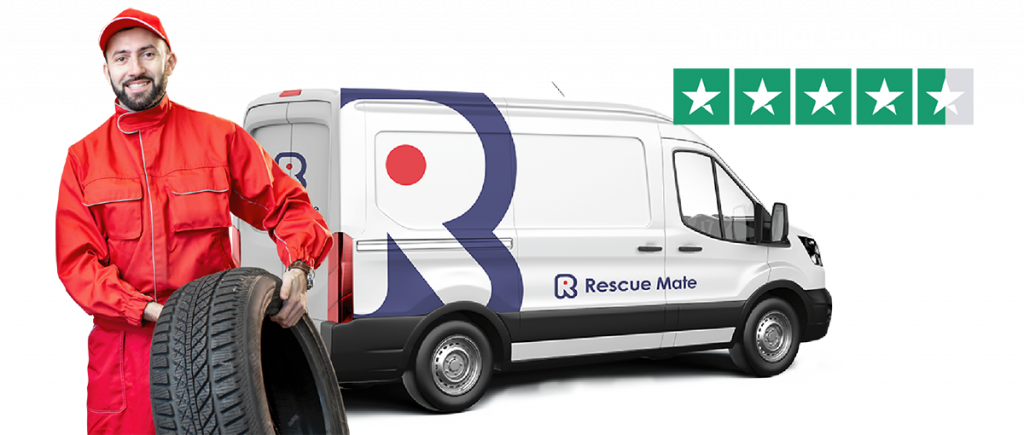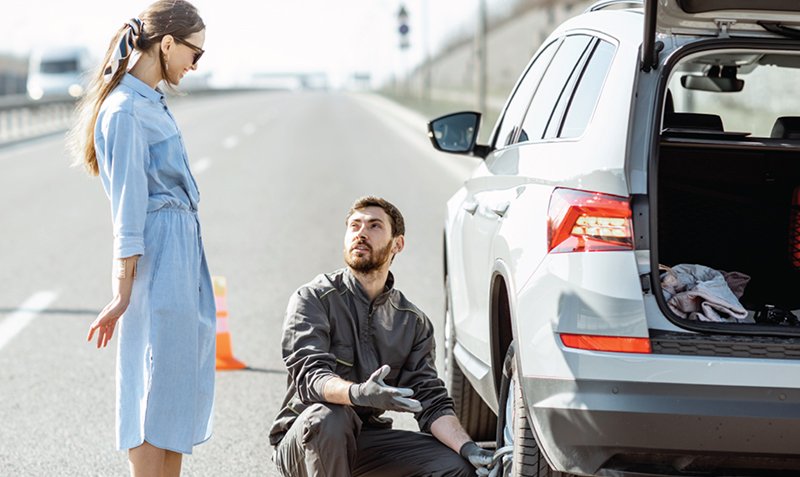1. Check The Pressure Regularly
Tyre pressure can have a significant impact on your car’s steering, handling, braking and mileage. If tyres are under or over inflated, it can increase fuel consumption and make them more susceptible to wear and tear. At worst, having the wrong tyre pressure can result in a blowout, which can cause you to lose control of your car.
To avoid putting yourself and any passengers onboard in danger or having to call for breakdown assistance, it’s important to make sure that you check your tyre pressure at least every month, including the spare. You should also check the pressure before long journeys or if your car is carrying a heavier load than usual.
The pressure can be checked at your local petrol station or with your own pressure gauge and must be done when the tyres are cold to achieve an accurate reading. The owner’s manual should include recommendations for the optimum tyre pressure for your vehicle if you are unsure. It’s also worth bearing in mind that the pressure number marked on the tyres is the absolute maximum the tyre can take and should not be used as an indicator for daily use.
2. Check For Damage And Unusual Wear And Tear
It’s also important for drivers to do a physical check of the tyres and look out for any signs of unusual wear or damage. This can include cuts, bulges or any objects that have punctured the tyre. If you notice any of these problems, you will need to get them checked by a professional mechanic and repaired if necessary. In some cases, the tyre will need to be replaced altogether with a new one.
If you get a puncture while driving, replace it with the spare if you can until you make it to the nearest garage to be inspected. Bear in mind that spare tyres are designed only for temporary use and should be swapped with a regular one as soon as possible.
3. Make Sure There Is Enough Tread
Tyre treads have a direct impact not only on the performance of your car, but also its overall safety, especially in poor weather conditions. The legal minimum tread depth is 1.6mm, so it’s important to make sure that it does not go below this limit. If the tread is at or below the minimum depth, your tyres will need to be replaced straight away.
Remember, driving a car with tyres below this limit is not only illegal but also extremely dangerous and will cause your car to fail its MOT test. Having the correct depth is essential to ensuring good control and maximising the safety of your vehicle.
4. Don’t Overload Your Car
Overloading your car can be more hazardous than you may think. A vehicle carrying a lot of weight can compromise the handling and cause excessive wear on the tyres due to excessive heat. This could cause a tyre explosion and put you at danger of having a road accident.
Luckily, most tyres now include a label which will have the tyre load index marked on it. Take care not to exceed the recommended amount. You may also be able to find out how much weight your car can safely handle on the placard on the door frame.
5. Keep Your Wheels Aligned
Having your wheels out of alignment can also create problems for your tyres. Incorrectly aligned tyres can result in uneven wear, which can weaken them and make them more prone to damage. It can also reduce the driver’s control of the car and increase fuel consumption.
When you are having your vehicle looked over or having new tyres put on at a garage, make sure the alignment is checked and adjusted if needs be.
6. Be Mindful When Mounting The Kerb
Whether you’re pulling up to park on a busy street or you’re trying to get around an obstacle in the road, sometimes mounting the kerb is unavoidable. However, it’s important to be mindful when you’re manoeuvring your car in this way – especially if you want to keep your tyres in tip top condition. Mounting the kerb can cause the tyre’s sidewall to become pinched between the kerb and the wheel, causing them to weaken and potentially resulting in a tyre blow-out.
Ideally, you should avoid mounting the kerb altogether, but if you have to, make sure you’re careful in your approach. Climb the kerb slowly at an acute angle and ensure you don’t scrape up the side of the pavement to avoid damaging your tyres.
7. Maintain Good Driving Habits
As well as basic maintenance, it’s also important that you practice good driving habits to keep your tyres in top condition. Excessive braking or acceleration while driving, or constantly stopping and starting in traffic, can have a detrimental effect on your tyres and cause them wear more quickly.
With that in mind, try to drive as smoothly and consistently as possible and avoid excessive speeds. You should also try to avoid any uneven road surfaces and hazards such as potholes and take care to slow down for speed bumps to prevent the wheels from being knocked out of alignment.
Mobile Tyre Fitting
Mobile Tyre Fitting – Our expert mobile tyre fitters always provide a fast and seamless service equipped with the latest mobile tyre changers, compressors and everything needed to get you back on the road again in minutes.
Emergency Tyre Fitters
local mobile fitters UK wide – Flat tyres and punctured tyres can happen anytime and anywhere. Everybody has experienced a flat tyre punctured randomly in the middle of the road or often at the roadside. No worries, if you get stuck due to a deflated tyre in unfamiliar areas and motorways where there are no repair garages. Rescue Mate facilitates excellent and round the clock assistance in flat tyre situations. We welcome our prospects to reach out to us anytime in the day and night. Best Flat Tyre Services in the Uk with the largest network of mobile tyre fitters providing a one-stop tyre replacement service in any tyre breakdown scenario.



